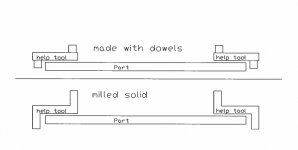openhearth
Plastic
- Joined
- Sep 9, 2012
- Location
- Linden, NJ, USA
Hello to all other inspectors!!
I need to make an measurement of 46.250" with a bilateral tolerance of 0.005. The vernier I have goes to 40". Getting a longer vernier is not an option. I really don't want to use a tape. Anyone have any tips, suggestions, or whatever you would do in this situation? In advance, thanks for all answers.
I need to make an measurement of 46.250" with a bilateral tolerance of 0.005. The vernier I have goes to 40". Getting a longer vernier is not an option. I really don't want to use a tape. Anyone have any tips, suggestions, or whatever you would do in this situation? In advance, thanks for all answers.




